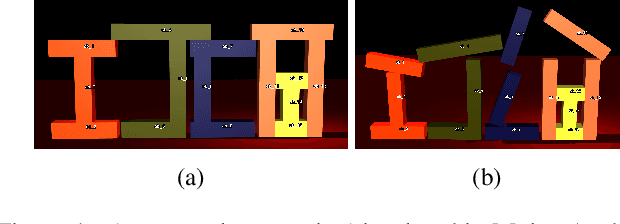Towards Explainable Inference about Object Motion using Qualitative Reasoning
Paper and Code
Jul 28, 2018
The capability of making explainable inferences regarding physical processes has long been desired. One fundamental physical process is object motion. Inferring what causes the motion of a group of objects can even be a challenging task for experts, e.g., in forensics science. Most of the work in the literature relies on physics simulation to draw such infer- ences. The simulation requires a precise model of the under- lying domain to work well and is essentially a black-box from which one can hardly obtain any useful explanation. By contrast, qualitative reasoning methods have the advan- tage in making transparent inferences with ambiguous infor- mation, which makes it suitable for this task. However, there has been no suitable qualitative theory proposed for object motion in three-dimensional space. In this paper, we take this challenge and develop a qualitative theory for the motion of rigid objects. Based on this theory, we develop a reasoning method to solve a very interesting problem: Assuming there are several objects that were initially at rest and now have started to move. We want to infer what action causes the movement of these objects.
 Add to Chrome
Add to Chrome Add to Firefox
Add to Firefox Add to Edge
Add to Edge